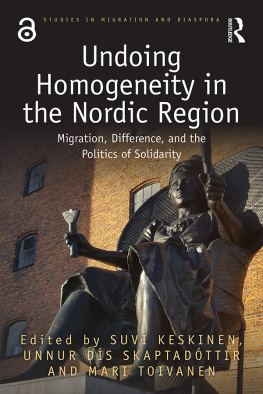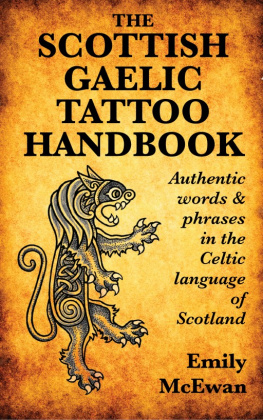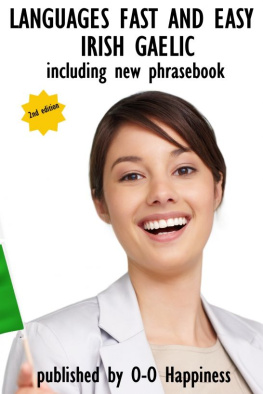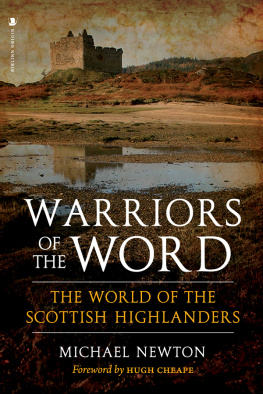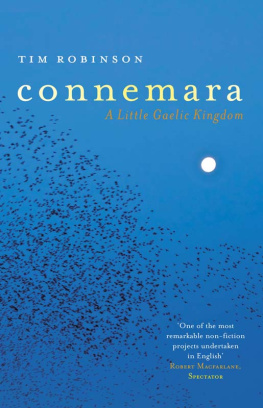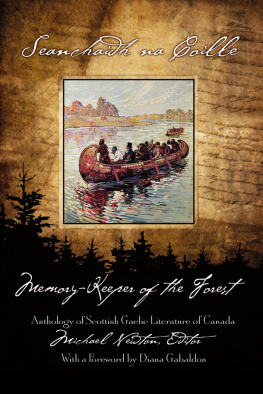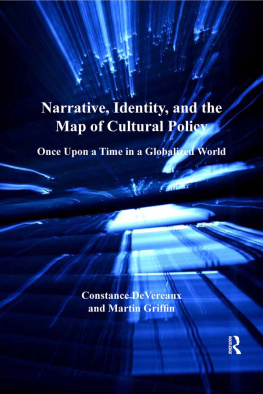First published 1997 by Berg Publishers
Published 2020 by Routledge
2 Park Square, Milton Park, Abingdon, Oxon OX14 4RN
605 Third Avenue, New York, NY 10017
Routledge is an imprint of the Taylor & Francis Group, an informa business
Copyright Sharon Macdonald 1997
All rights reserved. No part of this book may be reprinted or reproduced or utilised in any form or by any electronic, mechanical, or other means, now known or hereafter invented, including photocopying and recording, or in any information storage or retrieval system, without permission in writing from the publishers.
Notice:
Product or corporate names may be trademarks or registered trademarks, and are used only for identification and explanation without intent to infringe.
Library of Congress Cataloging-in-Publication Data
A catalogue record for this book is available from the Library of Congress.
British Library Cataloguing-in-Publication Data
A catalogue record for this book is available from the British Library.
ISBN13: 978-1-8597-3980-8 (hbk)
Typeset by JS Typesetting, Wellingborough, Northants.
Over the long course of completing this book, I have amassed immense practical and intellectual debts which are far too extensive to deal with at all adequately here. My first and immeasurable debt is to the people of Carnan, who so generously offered me hospitality and friendship, and who put up with my hanging around and my questions. 'Carnan' is a pseudonym, as are the names given to all individuals here, in order to try to lessen to some small extent the intrusion that a study such as this may be. In some cases I have also altered minor factual details in order to try to protect individual identities. I consider myself exceptionally fortunate to have been able to come to know, to some extent at least, so many in Carnan; and I think perhaps that part of the reason for my tardiness in letting this book inch its way towards publication is a fear of transforming relationships, formed over many years now, which have become very dear to me. I am aware that this book may seem odd and perhaps not as expected; but, full of shortcomings though it certainly is, it is my best and most honest attempt to understand life in Carnan, and I offer it as a perverse gift to those among whom I lived.
To folly name individuals here would run counter to the attempt to disguise those who helped me in my research, and indeed there are too many people in Carnan who showed me kindness to name individually. However, I would like to extend especial thanks to those who offered me accommodation, to Peggy and especially to Murdina for giving me my first and enduring real sense of the complexity of questions of Highland identity, for help with my faltering Gaelic, and for comments on some parts of this manuscript; to Christina, Robert, John, and especially the late Robert, who, perhaps more than anybody, showed me a radical and positive view of the Highland past and the vital place of jokes and wry humour in Hebrideans' outlook. I also thank Peggy and Lachy, and particularly Lachy, for so much valuable talk in and about Gaelic, and about local life. 'Dollag' has provided a very treasured friendship and letters which at various points have helped me clarify points which were puzzling me. Gratitude is also due to the teachers and pupils of Carnan school, and to all those who provided me with information about Gaelic education. Margaret deserves a particular mention not only for her friendship but also for reading and commenting on this manuscript, so saving me from a number of possible inadvertent offences and errors. Those that remain, of course, are entirely my own responsibility.
Funding for this research has come from the Economic and Social Research Council, the Sir John Rhys Bequest for Celtic Studies (University of Oxford), St Catherine's College, Oxford, and Keele University. I extend gratitude to these organisations and to the colleagues with whom 1 have worked over the years who so often have made me think again about my research. I also thank staff at Comunn na Gaidhlig, Highland Enterprise and the School of Scottish Studies and Jonathan MacDonald, Skye Museum of Island Life for the assistance that they have given me, I am grateful to Canongate Books Ltd (14 High Street, Edinburgh, EH1 1TE) for permission to quote from Sorley MacLean's poem 'A Chiall 'sa Ghraidh' originally published in Spring Tide and Neap Tide: Selected Poems 193272; and to Shirley Ardener for permission to reproduce two diagrams by E.W. Ardener ().
Intellectually, I have a particular debt to the late Edwin Ardener, the supervisor until his untimely death of the doctoral thesis on which this book is based. Edwin not only gave me my first lessons in Gaelic at his kitchen table, he also generously shared ideas and insights on matters Hebridean as well as anthropological. I am also fortunate to have benefited from comments on all or part of various versions of this book from the following: Mike Beaney, Edward Condry, Jeanette Edwards, D. Ellis Evans, Michael Gilsenan, Richard Jenkins, Miri Mac Arthur, John Maclnnes, Maryon McDonald, John McLeod, Catherine Shoupe and especially Susan Parman. I may not have always done justice to their comments but they have all helped me to make this a better book than it would have been. I am also grateful for support and interest from Shirley Ardener, Ruth Finnegan, Ronnie Frankenberg, Kirsten Hastrup, Wendy James, John Law, and Ken MacKinnon; and to all those who have commented on my work in seminars and discussions. At Berg, Kathryn Earle's encouragement and enthusiasm have been important in helping this book see the light of day; as has Judy Mabro's thorough copy-editing. Some debts, of course, reach much further back, and I would like to acknowledge my gratitude to my mother, Brenda Macdonald, and to my late father with whose ghost parts of this book have sometimes been a conversation.
My sister, Julie White, has drawn the pictures which grace these pages, so helping resolve two dilemmas, one concerning the poor quality of many of my photographs and the other of wishing to include illustrations while preserving anonymity as far as possible. I thank her for doing such a beautiful job.
Mike Beaney, my husband, has played an enormous role in the research at all its stages. He deserves special thanks for the hard drinking and days of lugging sheep about that he did in Carnan for the sake of my fieldwork, and for the help and vision he has given during the long labour of producing this book. I also thank our children, Thomas, Harriet, and particularly our eldest daughter, Tara Catrona, for being wonderful fieldwork assistants. Their observations have often made me stop and look and think again. And their evident love for Carnan and desire to return have also made me acknowledge better some of my own feelings and profitably complicate further, to some extent at least, my account here.



